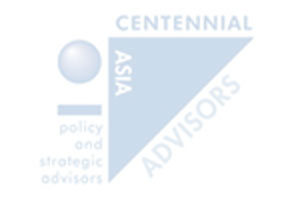Asian Insights
A summary of “Asian Insights” weekly update is published here. The full version is available through paid subscription. Please click here to register your interest. Our executive will get in touch with you.

Four themes emerge from recent developments…
- More global dislocations portend contraction in Asia: Extreme restrictions on social mingling and travel will crush economic activity around the world for at least 1-2 months; China’s recovery could surprise positively but it will not offset the overall shock to global demand.
- Growing signs of financial stress: The sharp fall in cashflows is likely to lead to a rise in defaults, the fear of which is already causing severe corrections in financial markets. High debt levels are amplifying the scale and severity of these aftershocks.
- Policy responses are becoming formidable: The total stimulus being considered now amounts to about 5% of global GDP, but it is the composition of fiscal spending as well as the accompanying non-fiscal measures which are key. Importantly, the cumulative effect of policy support measures will only begin to drive a recovery in the second half of the year.
- Look beyond the virus crisis: other stresses are building: Tensions in the oil market and geo-political stresses are building, which could amplify virus-related shocks.
leading us to revise our forecasts for Asian economies:
|
2020 |
Growth (%) |
Inflation (%) |
CA (% of GDP) |
Currency (vs. USD) |
Policy Rate (%) |
|
China |
2.5 |
3.0 |
0.8 |
6.95 |
2.80 |
|
Hong Kong |
-0.7 |
1.5 |
2.5 |
7.80 |
– |
|
India |
5.2 |
3.8 |
-1.3 |
73.0 |
4.30 |
|
South Korea |
0.6 |
0.7 |
3.6 |
1,150 |
0.50 |
|
Taiwan |
1.6 |
0.6 |
11.0 |
29.7 |
1.00 |
|
Singapore |
-0.4 |
0.4 |
16.0 |
1.40 |
– |
|
Thailand |
-0.5 |
0.3 |
5.2 |
32.5 |
0.50 |
|
Vietnam |
5.5 |
2.6 |
1.7 |
23,100 |
4.50 |
|
Indonesia |
4.6 |
2.9 |
-2.5 |
14,500 |
3.75 |
|
The Philippines |
5.5 |
2.7 |
-1.5 |
51.0 |
2.75 |
|
Malaysia |
2.5 |
1.3 |
3.0 |
4.3 |
2.00 |
Source: Centennial Asia Advisors
Escalating financial risks: how will Asian economies fare?
- In the previous Weekly, we flagged three risks posed to Asia from the escalating financial contagion that have since materialised in full: the region’s currencies, equities and bonds have continued to take a drubbing, while a stratospheric rise in the USD has magnified fears of a dollar funding squeeze for the non-financial corporate sector.
- Now, a toxic mix of sharply slowing growth from the impending collapse in global demand, tightening financial conditions and existing high leverage in some jurisdictions will amplify the economic damage that is to come, with negative implications for banking sector stability.
Singapore: Recession imminent; aggressive stimulus forthcoming
- The precipitous decline in global activity makes it virtually certain that Singapore will enter a recession in 1H20. With broad-based economic weakness likely on top of downside risks to the inflation outlook and the probability of further slippage in the labour market, policy support will be aggressively ramped up to cushion the worst of the virus’ effects.

Four themes are driving the global economy:
- Accelerating global response to the coronavirus crisis: Central banks across the world have eased monetary policy and injected liquidity into the financial system. Fiscal policy support is also being ramped up. Our view is that these actions are not enough to help absorb the shocks, more policy support will have to be added.
- China’s economy is returning to normalcy: China’s stringent policies have brought the pace of new coronavirus infections down sharply, allowing the authorities to more aggressively ease the restrictions on activity. Although the rebound will be modest, it will provide progressively greater support for the world economy.
- But the US is likely to be a source of growing risks to Asia: The poor initial handling of the coronavirus crisis coupled with the weak social safety nets in the US raise the chances that the virus will spread alarmingly in the US, adding to the panic and restrictions that could slow the economy.
- Oil prices will remain lower for longer: The Saudi-Russian stand-off will persist for some time, which in combination with demand destruction, will keep oil prices low. However, the benefits of low oil prices will take time to emerge while its downsides will be more immediate.
Asian economies should brace for financial aftershocks
The escalating loss of confidence in the US and Europe over the coronavirus crisis and the abrupt fall in crude prices led to a swift collapse in financial market sentiment. The ongoing financial turbulence could unleash further adverse impacts on Asian economies:
- First, emerging Asian currencies, equities and bonds are at further risk should capital inflows reverse and capital outflows accelerate.
- Second, Asian economies potentially face a USD funding squeeze as the global risk aversion leads to a desperate “dash for dollars”.
- Third, Asia faces a wall of debt that is due to mature in less than 12 months, a period when refinancing is expected to be difficult.
- Fourth, there is a risk of a negative feedback loop established between the real and financial sectors as tightening financial conditions dovetail with a deepening growth slowdown, pushing up default risks.
Malaysia: despite new cabinet line-up, political risks remain high
- The announcement of a new cabinet has reduced uncertainty: The appointment of technocrats such as the new Finance Minister and the Minister in the Prime Minister’s Office supervising key economic agencies will be welcomed by investors.
- However, infighting within the coalition could undermine its coherence: The parties within the coalition are making demands for position while factional strife within parties, including the largest component, UMNO, and Prime Minister Muhyiddin’s own party could create new sources of instability.
